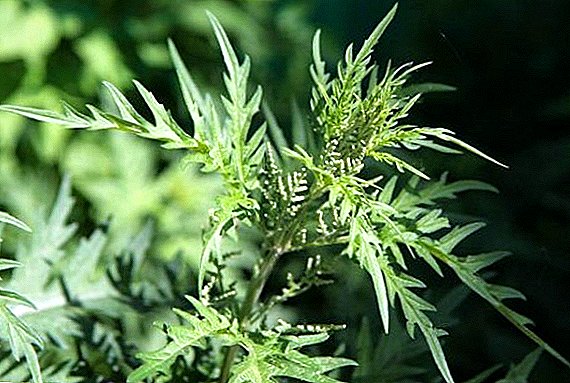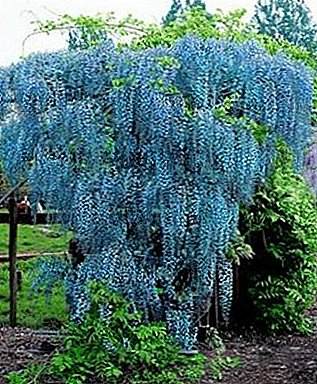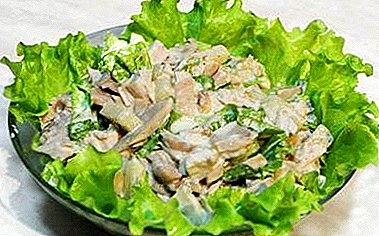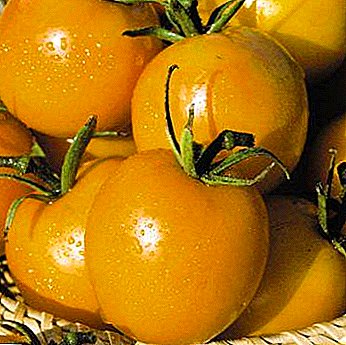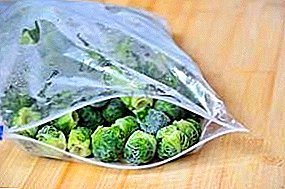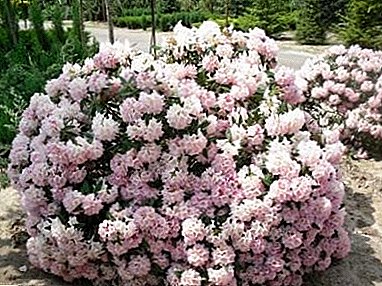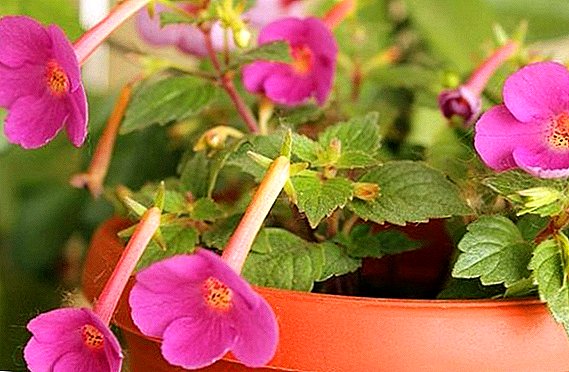 Ahimenez is a member of the Gesneriev family. There are about fifty species of these perennials in the world. Homeland Ahmenes - South and Central America, it is known since the XVIII century. This article will inform you about all the secrets of growing a flower at home.
Ahimenez is a member of the Gesneriev family. There are about fifty species of these perennials in the world. Homeland Ahmenes - South and Central America, it is known since the XVIII century. This article will inform you about all the secrets of growing a flower at home.
Did you know? Ahimenez - a relative of violets.
Growing conditions for achimenez
Ahimenez is called the "magic flower" for its beauty. If you follow the proper care of achimenes, the plant will give you beautiful flowering.
Soil composition
 The best soil for a plant is loose and easily permeable. There are many variations of soil composition for achimenes. They are all adjusted feedings. Ahimenez can be grown both on a landless substrate, based on peat with addition of baking powder and high-quality fertilizers, and on a substrate of peat, coconut fiber, humus and vermiculite.
The best soil for a plant is loose and easily permeable. There are many variations of soil composition for achimenes. They are all adjusted feedings. Ahimenez can be grown both on a landless substrate, based on peat with addition of baking powder and high-quality fertilizers, and on a substrate of peat, coconut fiber, humus and vermiculite.
Location and lighting
Ahimenez loves bright places and good lighting. In order for the plant to bloom during the growing season, it is better to put a pot with a flower on a well-lit window-sill. The window should face east or southeast.
On the south window shade the plant, as the rays of the sun can damage the plant leaves. With the beginning of flowering Ahimenez rearrange on the less sunny side. In the summer, take the plant to a loggia or veranda. Ahimenez should be protected from drafts and direct sunlight. This can be done using a hanging pots.
Temperature conditions
A houseplant such as achimenes needs the right temperature. During active growth and development (from autumn to spring) the temperature should be 24 ° C. In winter, 18 ° С will suffice, since at this time the plant has a period of rest.

Important! The temperature should be gradually reduced, as the roots are gaining strength for a comfortable wintering.
In summertime, you can safely keep achimenez in the open air, only the temperature outside should be below 20 ° C.
Care tips during the bloom of achimenes
Watering and fertilizing the soil of a plant is the most important in growing achimenes. In this section, we will tell you about tips on proper care for a flower during the flowering period.
During the active growth phase, the plant requires regular moderate watering. Some substrates are over dried, and this can lead to a slower growth of shoots. In the period of budding drought leads to wilting of flowers.
 During the rest period, watering should be very scarce. The plant is watered after the earth is completely dry and on the edge of the pot. This is done once a month. Spraying the flower does not like, because the leaves and flowers can lose their decorative appearance.
During the rest period, watering should be very scarce. The plant is watered after the earth is completely dry and on the edge of the pot. This is done once a month. Spraying the flower does not like, because the leaves and flowers can lose their decorative appearance.
Spraying can be applied, but not drip, but through a small nozzle. Feeding a young achimenez requires very often, especially after disembarkation. Fertilize the plant should be once a week with complex fertilizers for indoor plants. During the flowering period should be fertilized with a high nitrogen content. During budding use dressing with phosphorus and potassium.
Did you know? For busy gardeners there are complex fertilizers in the rods. They are buried in a pot, and with each watering nutrients are released into the pot.
Important in the care of achimenez is pinching. This is done in the early stages. Pinching Ahimenez start with the formation of 2-3 pairs of leaves and as new ones appear on young shoots. You can repeat the pinching until the first buds appear.
Air humidity
Ahimenez is a tropical plant. The optimum air humidity for it is 60%. The plant does not need spraying, it is enough to put a flowerpot on a pallet with wet pebbles.
You can also put a small container with water next to achimenez. Spray the plant is not worth it, as this leads to spots on the leaves.

Did you know? Ahmenez was described in 1754 by Patrick Brown, who was exploring Jamaica and its surroundings at the time.
Features of care in the period of rest of the flower
The period of rest at home achimenez is more than 4 months. At this time, the ground part of the flower dies off. In September, the plant stops growing, does not form new buds, and the leaves turn brown and die.
All this suggests that the florist must stop watering the plant. It should be done gradually. Do not cut the green part prematurely, because the rhizomes do not have time to take away all the useful substances from the leaves. The twig should dry, and only then cut it.
The pot can be put in a dark and cool place without removing the nodule from the old pot.
Important! If your archimenes tolerates the first wintering, then it is better not to water it at this time.
During the rest period water the plant gently. Overflow provokes early awakening, and this leads to the development of weak shoots due to lack of light.
 If the archimenez is out of rest, provide good lighting. This can be done using daylight. If the plant does not wake up for a long time, water it once with a water temperature of about 50 ° C.
If the archimenez is out of rest, provide good lighting. This can be done using daylight. If the plant does not wake up for a long time, water it once with a water temperature of about 50 ° C.
If you do not have a plant yet, but you already know how to grow ahimenez at home, we advise buying it faster. The plant is unpretentious, blooms profusely and all summer.
Did you know? This plant reaches 30 - 45 cm in height, usually with purple flowers.
The basics of the correct transplant
Ahimenez need to be transplanted as in the early stages of growth, and already adult plants. Transplanting is an important operation that affects the health of achimenes. If you have a young plant, then you should transplant the rhizomes of Ahimenes in March and April. Rhizomes planted before March will require additional lighting. As a result, you get weak shoots that will adversely affect flowering in the future.
 Rhizomes, which are planted in May and later, contribute to the lengthening of the growing season. In addition, they can late go into a state of rest - in October or November. Accordingly, Ahimenez will wake up later, and it will take you several years to restore their usual health and beauty.
Rhizomes, which are planted in May and later, contribute to the lengthening of the growing season. In addition, they can late go into a state of rest - in October or November. Accordingly, Ahimenez will wake up later, and it will take you several years to restore their usual health and beauty.
Plant sprouted rhizomes, because without sprouts the plant can start to rot with abundant watering. Spread the rhizomes horizontally and sprinkle with a layer of soil 0.5-3 cm thick.
Important! Layer depends on rizom size.
If the pots dry out very quickly (in one or two days), then your plant needs to increase the amount of soil. To do this, water the plant the day before transplanting, turn the pot over and remove the plant along with the earthy ball. Then place the plant with the drainage in a new pot and pour some soil on the sides. Shake the pot a little to ram the ground.
Transplanted plant water. We recommend doing this no later than mid-August.

Did you know? The distribution area of Ahimenez runs from the northern part of Mexico to Brazil. Any flower lives 2 - 3 days, but new buds always appear and open, so its flowering lasts from May to October.
Methods of breeding achimenes
The reproduction of achimenes is carried out in three ways. - seeds, cuttings and division of rhizomes.
Seeds
Ahimenes seeds can be obtained at home.
The plant produces green fruits, which remain so until the seeds are fully ripe. After flowering, the seeds ripen 2.5 months. Fruits should be soft. They are then harvested and sown in February or March. The soil should be loose and nutritious, you can use sand and leaf earth. You can also plant seeds in wet coarse sand.
Important! Powder the seeds on top is not necessary.
Capacity with seeds watered and covered with glass. The place for ripening is dark, the temperature should be 22-24 ° C.
Seeds air and water from the pallet. You will see the first shoots in 2-3 weeks. After that, the seedlings dive 2-3 times. At these times, change the pots, increasing them in volume. Then the plant is planted already in a permanent pot and looked after as an adult.
Cuttings
 This breeding method is rarely used for achimenes. For grafting choose the middle or lower part of the shoots of the plant and root them in the sand or in the substrate of equal parts of the leaf earth and sand. Then moistened and covered with a glass jar. The main thing is not to moisten the soil too much, because with abundant watering the cuttings rot.
This breeding method is rarely used for achimenes. For grafting choose the middle or lower part of the shoots of the plant and root them in the sand or in the substrate of equal parts of the leaf earth and sand. Then moistened and covered with a glass jar. The main thing is not to moisten the soil too much, because with abundant watering the cuttings rot.
Accelerate the process of rooting achimenez can be heated by the lower and the processing of stimulants like Kornevin or Heteroauxin. After 15 days, the stem cuttings begin to take root, and after a few days - form tubers.
Already rooted cuttings should be transplanted into a mixture for adult plants and care.
Division of rhizomes
This method is used from late February to April. If you want to grow several plants in one pot, the shoots can not be divided or planted in several pieces, sprinkled with loose substrate. After the appearance of the first shoots, the achimenez is transferred to a bright place. There, his first time to pritenyat.
 Loose shoots strengthened with special props. So they grow vertically. After 1.5 months, start feeding the plant regularly. It will be enough to do this twice a month. You can use fertilizer for indoor plants, but from August, use fertilizer with an increased content of potassium.
Loose shoots strengthened with special props. So they grow vertically. After 1.5 months, start feeding the plant regularly. It will be enough to do this twice a month. You can use fertilizer for indoor plants, but from August, use fertilizer with an increased content of potassium.
In good conditions, the plant grows, and the flowers of achimenes appear after 4 months. If you propagate by cuttings, then flowering will begin in three months, and if by seeds, by the end of the second year.
Prevention and treatment of achimenez diseases
Diseases of achimenes occur very rarely. Diseases can be avoided if you regularly inspect the bushes of Ahimenez, and also, if you properly conduct cultivation and care, the plant will be healthy and often delight you with beautiful buds.
If your plant begins to dry leaves, then the plant begins to prepare for a rest period.
 Dry stems can be carefully cut. In the pot should remain rhizomes. They can be placed in a plastic bag, after digging them out. The bag must be filled with sand or chips. This will help the air circulate normally inside the package.
Dry stems can be carefully cut. In the pot should remain rhizomes. They can be placed in a plastic bag, after digging them out. The bag must be filled with sand or chips. This will help the air circulate normally inside the package.
Rhizomes should be put in a dark place and observe low temperature conditions and ventilation.
Due to high humidity, sudden changes in temperature or with an excess of moisture, achimenes can be affected by gray rot. To heal the plant can be as follows: the affected stems and leaves are removed, and the pot is changing the soil and is treated with a fungicide.
If light brown spots appeared on the surface of the leaves, it means that you watered the plant with too cold water - replace it with warm water.
If the buds become brown, then the air temperature in the room is too high. In this case, ventilate the room more often.
As you could understand, such a houseplant, as ahimenes, is very convenient in grooming and does not require much effort. So you can safely buy this flower and plant at home. The plant, in turn, will delight you with beautiful buds.


